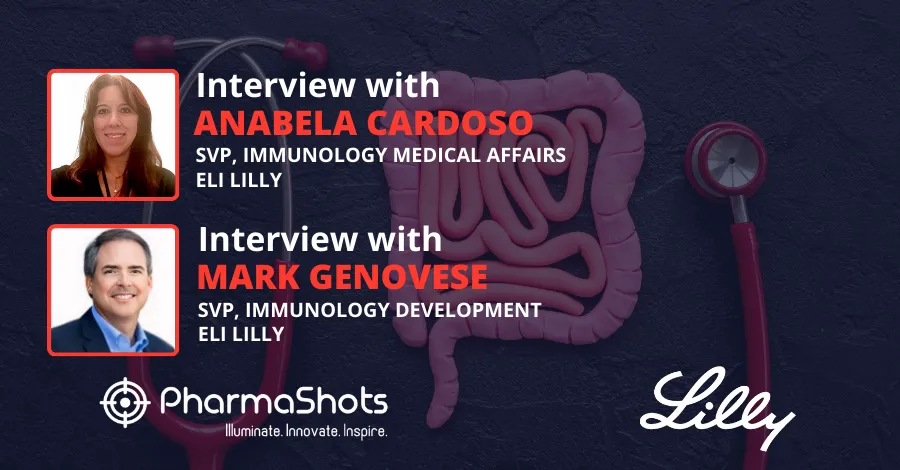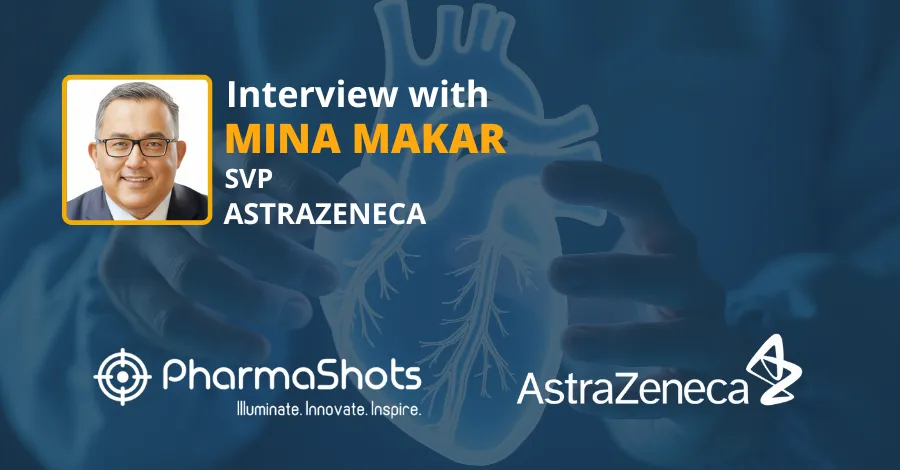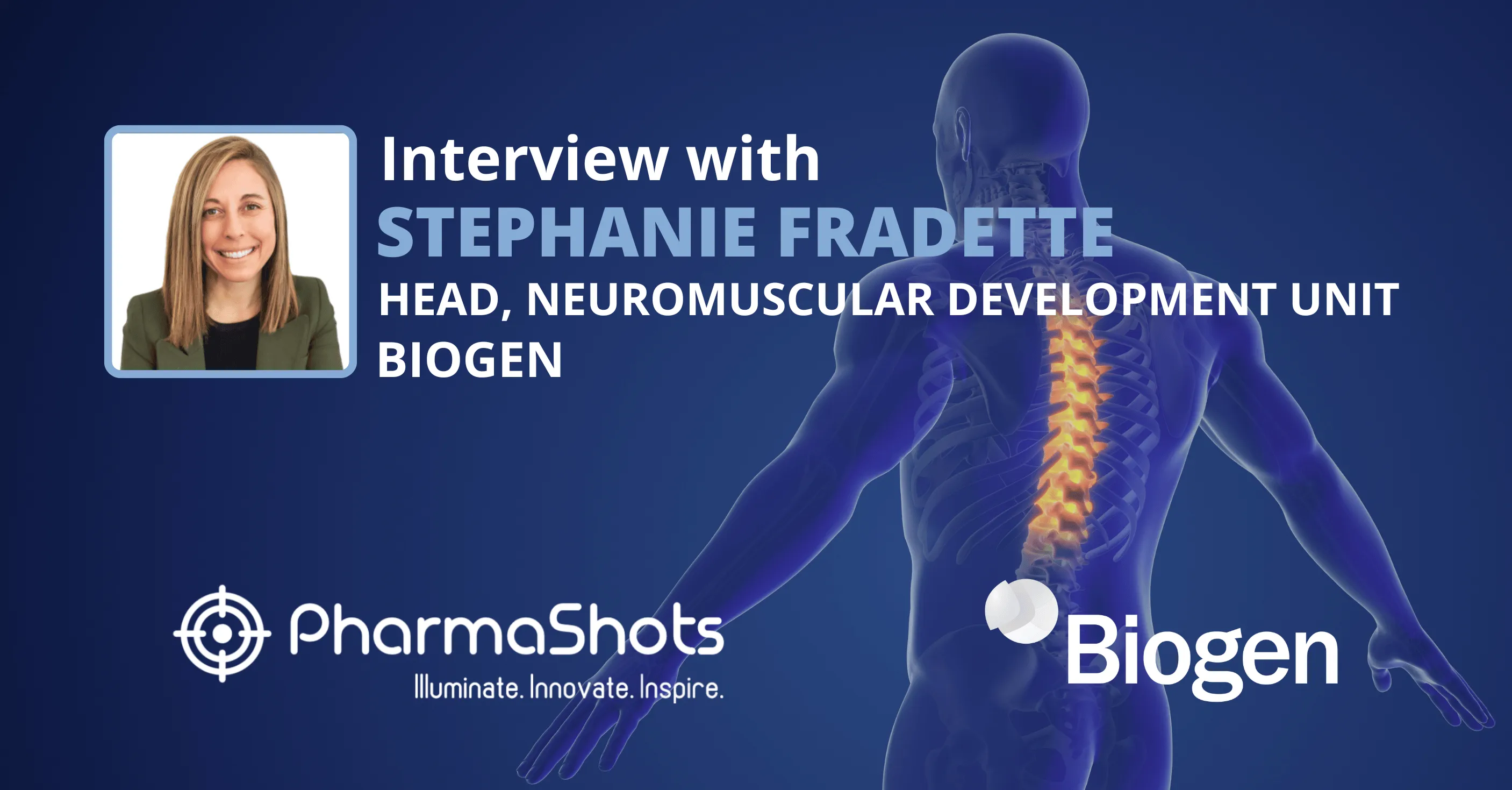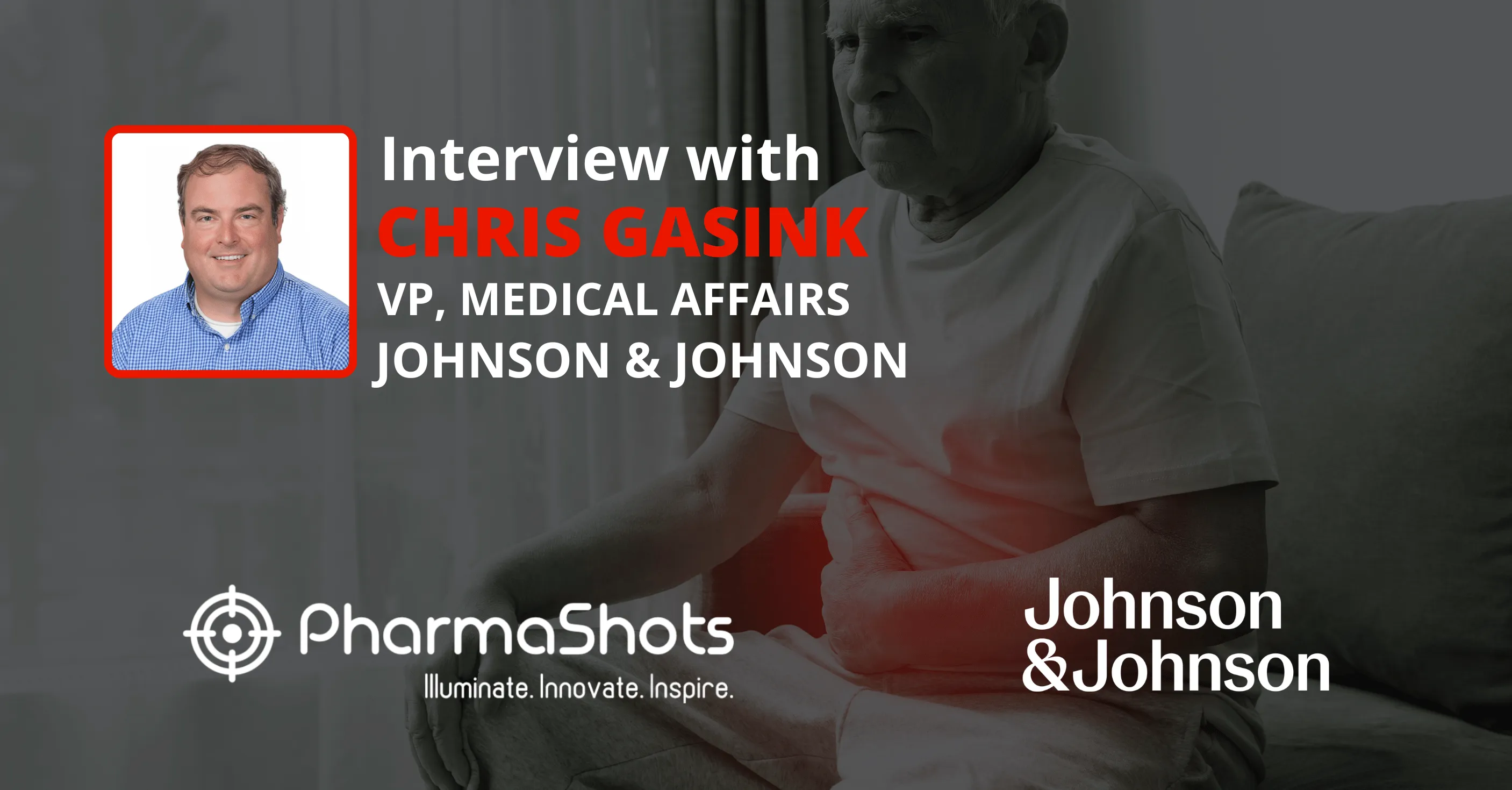
PharmaShots Interview: J&J's Sven Sjovall & Dr. Mark Watt Share Insight on Nicorette's Latest Digital Smoking Cessation Offering
In an interview with PharmaShots, Johnson & Johnson's Sven Sjovall, Sr Director, R&D Site Lead and Global Smoking Cessation, and Dr. Mark Watt, Senior Director Medical Affairs and Clinical Research at Johnson & Johnson share their views on Nicorette's latest digital smoking cessation offering and the science behind the QuickMist SmartTrack. They also shed some light on the delicate angles like quitting during COVID-19, digital health, and the behavioral science around quitting smoking.
Shots:
- The Nicorette Quickmist SmartTrack is the first of its kind, using NFC technology can simply tap your Quickmist spray against your phone (whilst the app is running) allowing you to keep full track of the progress
- The easy to use spray gets to work in just 30 seconds and helps to relive and/or prevent withdrawal symptoms and reduce the cravings you get when you try to stop smoking
- Each QuickMist spray comes with 150 sprays to give an instant release of nicotine, helping to brush off cravings. This spray can be used to either completely replace cigarettes or simply cut down the amount of smoke
Tuba: How does Nicorette work? What is the innovation behind Nicorette's works?
Sven: First of all, two things that smokers are addicted to I would say, if you simplify a little bit, one is the nicotine addiction, that is delivered by the cigarettes, but they are also addicted to the behavioral pattern of being a smoker. So that is what we take into account when it comes to the product.
We have developed Nicorette and our continuous innovations behind this is we are delivering nicotine via our product as we do it on our therapeutic level instead.
To be there to help the smokers to wean off nicotine, so they not only become smoke-free, but they also eventually become nicotine-free.
And then we provide our products in quite many formats, we have chewing gums, lozenges, patches, and so forth, and that is also the format to deliver against the behavioral support need. Different smokers have different needs, so some smokers, for instance, would like to use our inhaler. The inhaler still mimics a little bit of that hand-to-mouth movement. As you're giving up smoking, of course, when others find chewing gum, for instance, a better format for them, so we provide a quite broad range of formats to help out. We developed this product, for the first time, a little bit more than four years ago when we didn't first think of Nicorette format being the gum. And have kept on doing more clinical trials on the formats since then.
So, we have a vast number of clinical studies executed that have proven the effectiveness of our product. And I think we have studied it in more than 23,000 patients in our clinical programs over the years, so we know what it takes to stay in order to develop a very helpful product for smoking cessation.
Tuba: How Nicorette help people to quit smoking during the lockdown (Covid19)?

Source: Lloyd Pharmacy
Sven: We launched our latest innovation In United Kingdom in May 2020 which is our nicotine mouth spray, we call that QuickMist, it's a product that was already available, but we launched a digital version of it, so we call it QuickMist SmartTrack and that digital innovation was needed in a COVD-19 situation because going by a little bit to the behavior support aspect. When you're in a lockdown situation, you don't have the same availability to your network, it could be your friends or your family and so for a year and even your healthcare practitioner could be with limited access. So, you're left alone in a COVID-19 lockdown situation. To have this amplifying the digital capabilities for the first time. We coordinated with an app and you can personalize it, the app can actually be your friend in that very loneliness.
Mark: With COVID-19, there was an additional focus with the nature of the disease being a spiritual one and obviously smokers know that smoking is potentially harmful, I mean it's known to be harmful to the lungs. And so, in that situation, the question was whether or not there was an association between smoking and lungs, and so it was a sort of worse outcome of that. I think that's something that also drove people towards thinking about what we did and there has been some evidence of people moving towards attempting to quit smoking.
Certainly, considering very carefully what their options are and then looking for things in lockdown, particularly when people are shutting doors looking for things that they can use to address their smoking habit to reduce their risk. You know quite hopefully and also to avoid situations which might be exposing themselves to covid. It is the approach, which is known to be effective but is particularly effective with the circumstances of lockdown in covid-19 as well.
Tuba: Where it is available, and now where are you planning to launch in 2021 and coming years?
Sven: In the nicotine replacement therapy, Nicorette was the original inventor and we're still the world leader in that space and, of course, being the biggest comes to the responsibility to keep on pushing towards innovation. We are the best-suited organization to do so. I think in this kind of a public setup, I cannot share the details or such a pipeline, but we have very interesting programs. In general, we are continuously building on our geographic expansion, that we would like our treatment to be more available to more and moreover the globe. The important aspect is to advance the effectiveness of our products. And here I think QuickMist SmartTrack is an excellent example where we are tapping into the digital opportunity to really improve the effectiveness of the treatment and we continue looking at the format. As I said, we have many formats and that's because there are many, many smokers out there and every smoker is unique and there's no one size fits all format for all smokers so we're also continuously looking towards the format that can make more relevant for us. Not only to drive the brand of new grads, but being the world leader, and we also have a responsibility to drive the relevance of the product so we can reach you and help more workers to quit.
Mark:
We need to get as many options into the hands of as many smokers, across the world. And that's very much the approach we want to take, and we do that, obviously, through developing good products and presumably work. But then also through partnerships with agencies & groups such as who we've been working with them recently as well. Looking at the opportunities to try and take smoking cessation, and see new geographies & new places, and it is identified as a critical product for addressing smoking cessation. And globally, we seek to take nicotine in as many formats as we can and as many places as we can globally and that's you know and SmartTrack will be a part of that role, as well as we continue to sort of taking these across the globe.
Tuba: According to you, which nicotine replacement product (gums, lozenges, patch) is better in quitting smoking?
Mark: I think the first thing to recognize is every smoker is different, every smoker is unique and the things that drive smokers to continue smoking will differ by different motivations, different lifestyle factors. You know that there's a multitude of things that makes a smoker and keep someone a smoker. And so, rather than actually saying that anyone particular format is better than another, I think our belief is that there should be as many choices of formats as much as possible. In order to try and meet the different needs, that, people have whether it's a particular stage of life, a particular time of day or a particular you know part of their quitting journey if you like, and their attitude towards that so. As every writer writes different slogans using a variety of different methods so rather than anyone being more effective or potent or whatever to the other, what we find is that the smokers are seeking to quit and find a format that works for them. So same was mentioning before some people miss the action of actually bringing something to that lips and inhaling on that so again, we have a format that would be suitable for that, such as the QuickMist spray or the inhalers. Some people prefer to be able to chew on something, and so, though they might go for gums, some prefer to suck because again they can't choose which would be there in a workplace or something but that's not going to work so a lot of factors drives this such as lifestyle and the particular choice of smokers who start with a format and learn how to use it better. And you know, with time actually find that it becomes something which they can rely on and they can use and effectively throughout the duration of their quit. Because again in the same way smokers actually control the nicotine intake from cigarettes. They can control their intake of gums by chewing differently or by sucking a lozenge more aggressively. You know, a steady release format is something like a patch, which is obviously very discreet it's something you play at the start of each day. And it's something you don't have to think about again so for some people, that will be the kind of form that they wanted and they want to use in terms of it being discreet and something they don't necessarily have to think about. So there's not one form we would say is more effective, because a lot of it comes down to the individual, the individual smoker, the individual person looking to quit, and the kind of factors that will help say to keep them quit.
Sven:
On average, if you're motivated to quit, it takes like seven or eight times before you finally are able to quit. And, of course, when you're trying seven to eight times that also goes with what you're trying with, you could be potentially trying different formats. You tried one, it didn't work for you, for various reasons but as to not discourage you should try to get back and really try to do the most important health decision in your life, I would say. You know, get back and try another format that could become better because our former time different kinds of characteristics, so our most passive format is of course the patch. We only do one action per day, as you smack on touch on to your skin once a day until it's a very passive form that gives you a constant level of the therapeutic level of nicotine. But then, on the other side, you are like the mouth spray and the inhaler where you very active or working with have and mouth movement. So, it's important we have all these forms because every smoker will realize when he quit attempt have a little bit of different personal needs in order to be successful.
Tuba: Discuss the clinical data supporting the launch of Nicorette's QuickMist SmartTrack.

Source: Nicorette Professional
Mark:
We have the union of two discrete sets of clinical data that shows, you know its efficacy for what we're doing. So firstly, is the QuickMist device itself and that's obviously has been trialed previously and found to be about two and a half times more effective than placebo so in terms of actually driving. In Africa, we've got something that is more than doubled the chances of getting to a successful quit. And we were coupling that with behavioral support in the form of the APP which allows you to track and trace to receive tips and hints on how to stay on quitting. Things that can help develop willpower and maintain that willpower so active interventions and tracking your progress of health benefits and so on. And that kind of behavior support or ongoing fashion that can further increase the effectiveness of intervention and increased outcomes as well, so effectively we've been two data sets together in SmartTrack. We bring together the efficacy of the intervention itself and quickness and the efficacy of the behavior support that the APP is bringing together as well, and by having that work together so you can track your use of Quick Mist. With this sort of NFC chip, which you can track each usage by tapping into your phone. You get to see your progress in terms of how much you're using to support quit how it tracks against the number of cigarettes, which you can input and track as well. It'll help you to sort of track your progress and see how far you're getting in terms of cessation effectively and give you hints and tips to stay quit as well during that process, so I don't know if you've got anything else to add to that one as well Sven.
Sven:
Behavioral science is a standalone scientific feeling itself when you quit smoking. You can do that in many different ways, you don't need to go buy a nicotine replacement therapy, as we are providing, of course, many of quitting in by other means. More behavioral support related, but it is significant in clinical evidence. We have our behavioral scientists who also been part of the development of this specific App, where the spotlight could also mention and when we develop for the SmartTrack, it was not only the scientists, own sitting and crafting the best possible content of the app. We actually co-created it also with smokers, so we had focus groups working together with us building the content of the app that resonates more to a smoker, you will also have the opportunity, in the App, when you're introducing yourself into the App. There are some fundamental questions to populate and check or uncheck so you can personalize the content of what makes the most sense or most motivating for you. I mean for some people is very motivated to understand money saved, for instance. If I don't buy cigarettes, how much money do actually save, no to doing that some people find that highly motivating? And then the App can include that while others might find I would like to be prompted by the early Friday evenings because a Friday evening is my pitfall, that's when I typically go to the restaurant and have those cigarettes, to contain the content of the App in a smart way.
Tuba: Do you think such kind of digital innovations could help people with smoking addiction?
Mark:
You know one of the interesting things about SmartTrack is we are able to at least get an idea of how it's working within different age groups and we've looked at that during the development process and we look to see. You know how best to engage the different age people with the smartphone depending on which country you're in you know pretty much everybody's got a smartphone of some description there. And people spend a lot of time looking at smartphones and they use a lot of apps to help manage their diary, manage their life, manage their shopping list. You know, keep track of their kids, whatever is this is something which is becoming a trusted reference that they've trusted tool. And I think we're able to start to bring behavioral science much closer to the individual person who's quitting at any given time, and the idea of having effectively a kind of a quick buddy in your pocket is something which I think is very interesting compelling idea. So, in order to help people make the right choices, you know, in order to support somebody or answer a question or point when they actually tend to start quitting. Then, the hope and the belief are that they will reach for the kind of support and this kind of application, the digital form. And it will help to keep them on track, to know to sustain their will to quit and not only that but help them to get the best out of the treatments, that are using to try and support it. Okay, long the short of it is yes, absolutely these kinds of apps of digital interventions will be an integral part in supporting treatments in seeing people through to the appeal for don't come and get them close to what they're hoping to achieve in quitting.
Sven:
I could add on that of course in all the historical clinical research executed in the field of nicotine replacement therapy, not only for Nicorette. We do know that in those traditional studies, where we had more interventions, you had more engagement from a healthcare professional, either through face-to-face or through telephone interactions, that kind of interaction increases your chances to quit. Now, with the opportunity with mobile phones all over the world, we can actually move that into the digital space, but again I'm coming back to the behavior support here. So basically, instead of having it and the necessity to physically meet adopted as it was in the past, now, you can actually have a quit partner in your pocket, you're carrying around your mobile phone already and to, as you pointed out more game and people are now getting more and more acquainted, to be able to change the digital environment. In general, it could be a diet, or whatever or you run cheaper so forth, so we are very confident but the digital opportunity and now opening up for us, through technology is a very interesting field to advance.
Mark:
People are voting with their fingers technically rather than with their feet, I suppose, but we know that 45% of smokers in the UK have used some sort of App during the course of that to help them get there, so we only see that going one direction and again if we can provide tailored support to help them using clinically proven therapy, such as Nicorette then we think that the potential facility between those is very high.
Tuba: Is there any feature of telemedicine in the App or any chances to have this in future?
Sven:
In our smart product, there is no connection to HCPs but to your point, that is also a very important aspect that you could envision in future development right. Not only a digital product but still maintain the good stuff, if I use that phrase when it comes to healthcare professional connection so. That is, of course, something we keep in mind to see how we can further build that ecosystem, you could say, or how can you as quitting smoking or connect to the outside so that's something that's absolutely worth looking into.
Mark:
We never get to the stage where we can replace healthcare professionals, but I think we really, we can certainly be in a position where we can augment and support and potentially even help healthcare professionals to even track the quits of the best work as well. But for those who aren't motivated to go and consult with healthcare professionals and the vast majority quit attempts are on without the assistance of a healthcare professional than having something like this. I certainly believe will augment their chances of quitting and getting a positive experience supposed to benefit from the for the penalty when used the correct product.
Tuba: Does a J&J have any patient engagement programs where you have regular engagements with patients to know about the product pricing and all any kind of patient engagement program that will benefit the patients?
Sven:
When we are providing our products to the market, I mean one is to be very close to the consumer and it is very important and we do that with ongoing consumer research. Of course, the sales performance, to some extent also tells you if you're delivering the product in a good way. For consumer interaction is, of course, something we are the revenue of the quite the organization, we call them consumer business intelligence. For that product on the market, of course, when we do new product development, we always ensure we are close to the consumer perspective in the development phase. So, we have the focus group research you're testing and trying things and so forth, but I would say, it was very important for our brand and the healthcare professional community. That is what it is very important because if we can make our health care professional really understand in order to smoking cessation, they are very important to set of ambassadors that will say foot for the patients. To be able to really coach and work with their patients to stop smoking. Healthcare professional programs are something that we are working very actively on there is from market to market, it also depends on the maturity of the market as such. We do important programs in that space.
Mark:
I mentioned earlier, that we've been working in partnership with organizations as well as with WHO to have patient access facilitated serenity products. In markets are the US, Jordan, Philippines we've worked in partnership with WHO to try and bring in it to smokers you otherwise may not have access to it. We do seek partnership, such as that we do work with the agencies to try and increase support to this works to enjoy.
Tuba: Discuss something about patient program or any HCP education program by J&J?
Mark:
Not just the product but also education around the importance of quitting smoking and so again, we would always be keen to enjoy the kind of relationships and promotes health education programs as smoking cessation programs. We were aware obviously as well and in the past been involved in national programs and in supporting the sort of rollout of smoking cessation programs and individual countries as well. But I mean just to quickly sort of reflecting back onto the digital side of things as well, one of the beauties of having digital support is that it will help both in terms of education around the potential arms and that it actually actively encourages you to quit because it gives you the health benefits of quitting as you're going through it. It also encourages people to get the best out of the products that they have in their possession. Straightforward to use intuitively to us, but again to get the best out of it something like and happen and support would actually help people to get more out of that as well. So it can be a form of real-time education that can actually support the use of a product such as QuickMist and help people get the most out of that as well. So I think we look for every opportunity to engage in education, to try and you know move people towards quitting, and when they're ready for it be there to help support them.
Sven:
Those are very interesting programs in J&J for the world and for the consumers in many spaces. We all know that if you are a smoker going into heavy surgery, you're in a worse place coming out well in terms of your recovery, a smoker takes a longer time to recover after surgery. So, we also have that kind of cooperation within J&J to provide the broadest possible solutions, so in that case, it's more like providing our Nicorette products let's say four weeks before operations. You have least smoke-free a month before going into surgery, and then also stay on the product. If the first month of recovery, then you have a much better profile of coming back so that's another way, we also constantly trying to contribute and help out in different kinds of health situations.
About Author:

Sven Sjovall is the Sr. Director, R&D Site Lead, and Global Smoking Cessation at Johnson & Johnson. He is Nicorette's R&D expert and has had several scientific papers published with Lund University.

Dr. Mark Watt is the Senior Director of Medical Affairs and Clinical Research at Johnson & Johnson. He is one of the key figures around the consumer focus that drives Nicorette products, with 13 years of experience understanding the efficacy and safety of nicotine replacement therapy as well as challenges that consumers face while quitting.
Related Post: ViewPoints Interview: Dr. Drew Falconer Shares Insights on the Abbott's NeuroSphere Virtual Clinic
Tags

This content piece was prepared by our former Senior Editor. She had expertise in life science research and was an avid reader. For any query reach out to us at connect@pharmashots.com














